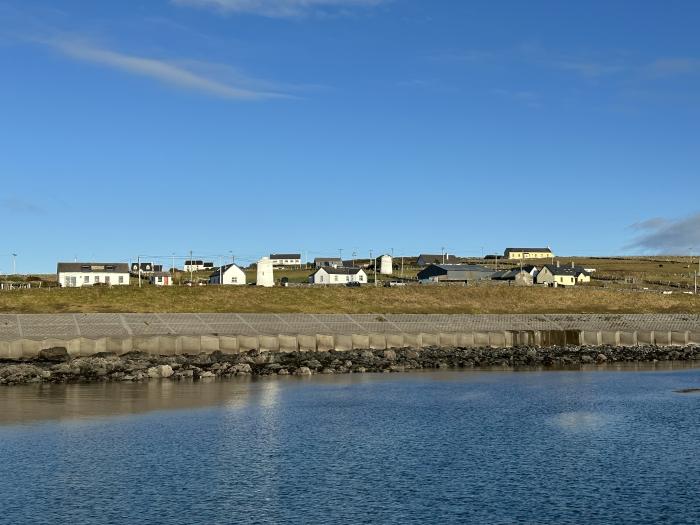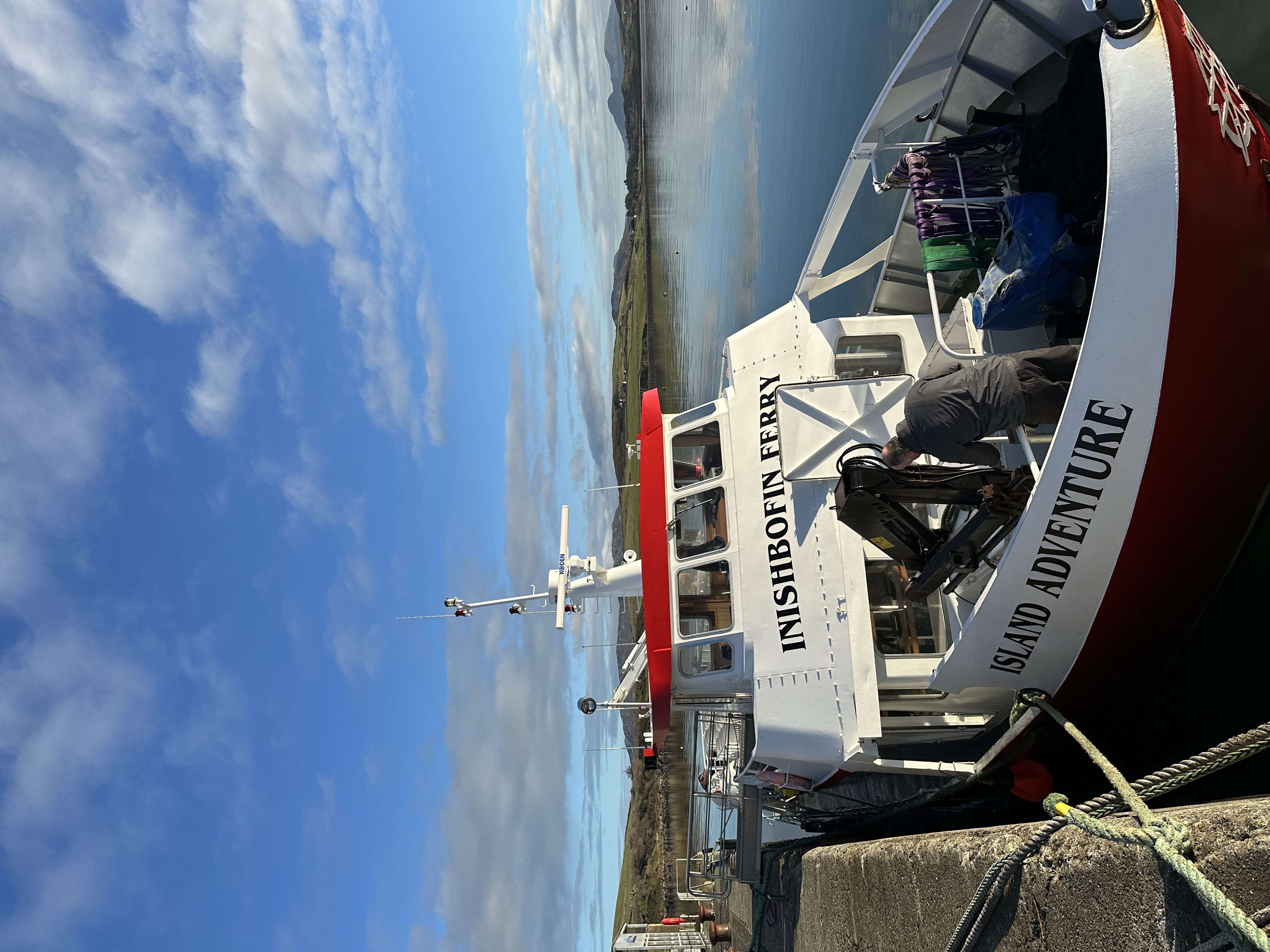
by Alexis Chatzimpiros
The sunset behind the cloud formations during my December early afternoon walk on Inishbofin is stunning. The sea distance of 8 km separating the small island from the coast of Connemara on the west coast of Ireland is covered by the small ferry in half hour. The ferry two trips per day transport provisions for the local grocery shop and the pub, which are open all year long, as well as orders placed online by the 180 residents.
Among these goods, come coffee beans for the Community Centre, right above the harbour. Ann, who just came back from the US visiting her son, staffs the tourist information centre and runs the gift shop at the island’s Community Centre, and makes sure that good coffee is on offer. Chris, a member of the Community Centre’s voluntary board of 7 directors and treasurer comes in as we speak. How many do you expect tonight, I ask him and Tuuli Rantala, Community Development Coordinator at Inishbofin Development Company, who invited me to the island. Hopefully around 20-something, they say. I catch myself thinking that that’s 15% of the island’s population!
Tuuli has been very active in looking into options and funding opportunities for Inishbofin to move towards clean energy. Its Leader-funded Energy Masterplan was completed in 2021 and found that the technical potential for energy generation on the island from its natural resources is strong, particularly from building mounted or large-scale solar PV, small-scale wind energy, and one of the most commercially viable wave generators. In addition, a 2022 study funded by Horizon 2020 (NESOI) looked more closely into a few of the suggested solutions and into the impact of the renewable energy community on the grid and recommended a detailed grid study. As the time for the evening public meeting approaches, I wonder to what extent residents are aware of these efforts and the potential EU support.

From left to right: Alexis Chatzimpiros, Tuuli Rantala, Colman King, David Lavelle
People are gradually coming in filling almost every chair placed in a circular arrangement in the small meeting room. Being the guest from the Energy Academy on the Danish Island of Samsø, I tell the story of how that small island community decided to invest in on-shore and off-shore wind turbines, local biomass-fuelled district heating and electric cars, making the island carbon negative already in 2007 and reaping benefits. The unique achievement that made Samsø a brand name worldwide always attracts attention. But scratching beneath the surface to explain that this was not easy at all and that initially there were many objections and resistance to change, is what triggers people to enter into a discussion and ask questions. What about our heating options? How much would a wind turbine cover all our electricity needs cost? All ferries will go electric in some years, anyway, better do it ourselves!
Without a doubt, local benefits, jobs and income are key for any discussion about development. The school, which has currently 18 kids, the fish smoking and filleting course that is going on at the pub these days and the first and only island microbrewery in Ireland that Colman King started in 2020, and Dave Lavelle, who moved back to Inishbofin with his family to run their business from the island are few examples that demonstrate that the islanders don’t give up. They are connected to their place and want to make the island community grow further. And they are now considering clean energy to be part of the development!
The beer is very good by the way. Before ordering a second one at the bar, I tell Colman who is sitting next to me to consider expanding his production to start exporting it.
More insight on inishbofin.com

